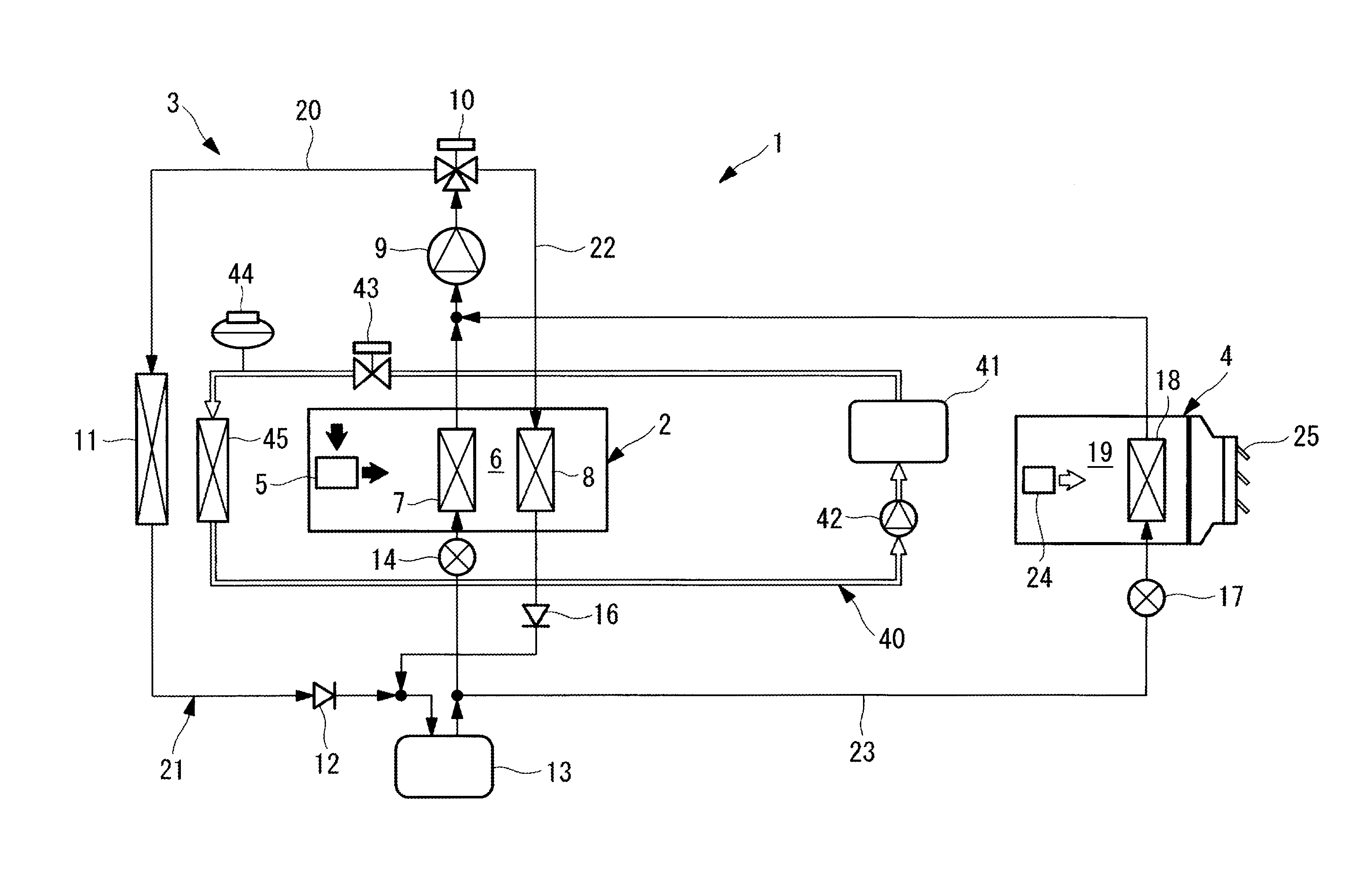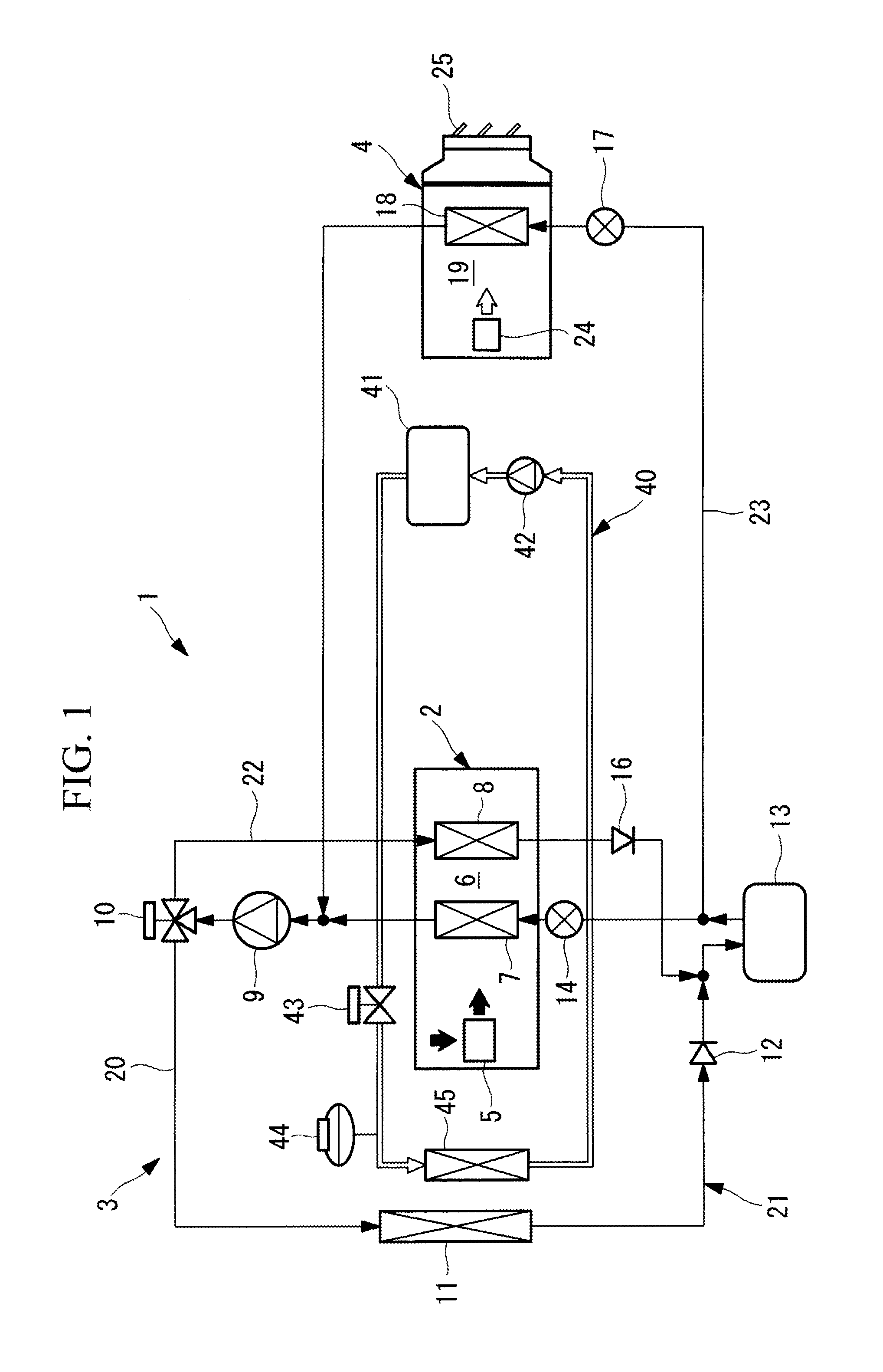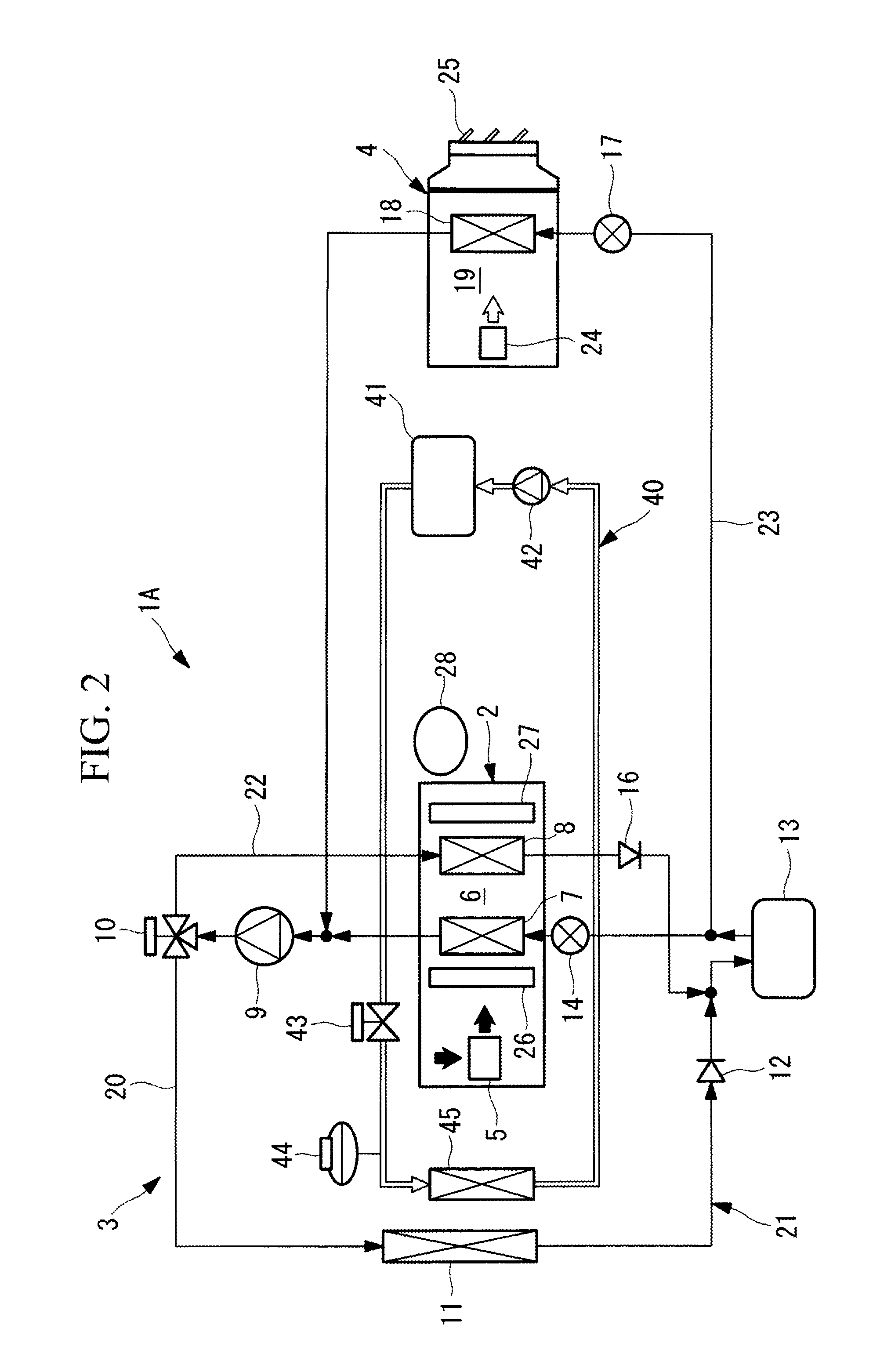Vehicle air-conditioning system
a technology for air-conditioning systems and electric vehicles, which is applied in the operation mode of machines, domestic cooling devices, lighting and heating devices, etc., can solve the problems of inability to establish a heating system using only exhaust heat as a heat source, the amount of exhaust heat is so small, and the air-conditioning system used in electric vehicles cannot perform a heating operation. achieve the effect of simplifying the circuit configuration, reducing the number of components, and high capacity
- Summary
- Abstract
- Description
- Claims
- Application Information
AI Technical Summary
Benefits of technology
Problems solved by technology
Method used
Image
Examples
first embodiment
[0058]A first embodiment of the present invention will be described hereinbelow using FIG. 1.
[0059]FIG. 1 shows a configuration diagram of a vehicle air-conditioning system 1 according to a first embodiment of the present invention.
[0060]The vehicle air-conditioning system 1 of this embodiment is equipped with a heating ventilation and air conditioning unit (HVAC unit) 2, a heat pump cycle 3, and a ventilation-exhaust-heat recovery unit 4.
[0061]The HVAC unit 2 includes a blower 5 that introduces inside air from a vehicle interior, outside air, or a mixture of inside air and outside air by switching to any one of these and blows it downstream and a first refrigerant evaporator 7 and a second refrigerant condenser 8 which are disposed in sequence from the upstream side to the downstream side in an air channel 6 that continues from the blower 5. This HVAC unit 2 is generally disposed in an instrument panel at the front of the vehicle interior and is configured to blow out an airflow wh...
second embodiment
[0076]Next, a second embodiment of the present invention will be described using FIG. 2.
[0077]A vehicle air-conditioning system 1A of this embodiment differs from the foregoing vehicle air-conditioning system 1 of the first embodiment in that PTC heaters 26 and 27 and a humidity sensor 28 are provided. Since the other features are the same as those of the vehicle air-conditioning system 1 of the first embodiment, descriptions thereof will be omitted.
[0078]In the vehicle air-conditioning system 1A of this embodiment, as shown in FIG. 2, the HVAC unit 2 is configured such that the PTC heater (Positive Temperature Coefficient Heater) 26 is disposed upstream of the refrigerant evaporator 7 and the PTC heater 27 is disposed downstream of the second refrigerant condenser 8 in the air channel 6. Furthermore, the humidity sensor 28 is provided in the vehicle interior for sensing window fogging.
[0079]As described above, by disposing the PTC heaters 26 and 27 in the air channel 6 of the HVAC ...
third embodiment
[0083]Next, a third embodiment of the present invention will be described using FIG. 3.
[0084]A vehicle air-conditioning system 1B of this embodiment differs from the vehicle air-conditioning systems 1 and 1A of the foregoing first and second embodiments in that the PTC heater 29 is provided in the ventilation channel 19. Since the other features are the same as those of the vehicle air-conditioning systems 1 and 1A of the first and second embodiments, descriptions thereof will be omitted.
[0085]As shown in FIG. 3, the vehicle air-conditioning system 1B of this embodiment is configured such that the PTC heater 29 is provided upstream of the second refrigerant evaporator 18 in the ventilation channel 19 of the ventilation-exhaust-heat recovery unit 4. This embodiment is the same as the second embodiment in that the PTC heater 27 is provided downstream of the second refrigerant condenser 8 in the HVAC unit 2, and the humidity sensor 28 for sensing window fogging is provided in the vehic...
PUM
 Login to View More
Login to View More Abstract
Description
Claims
Application Information
 Login to View More
Login to View More - Generate Ideas
- Intellectual Property
- Life Sciences
- Materials
- Tech Scout
- Unparalleled Data Quality
- Higher Quality Content
- 60% Fewer Hallucinations
Browse by: Latest US Patents, China's latest patents, Technical Efficacy Thesaurus, Application Domain, Technology Topic, Popular Technical Reports.
© 2025 PatSnap. All rights reserved.Legal|Privacy policy|Modern Slavery Act Transparency Statement|Sitemap|About US| Contact US: help@patsnap.com



